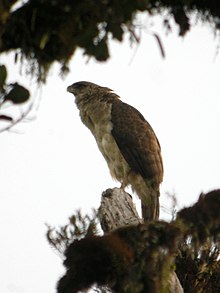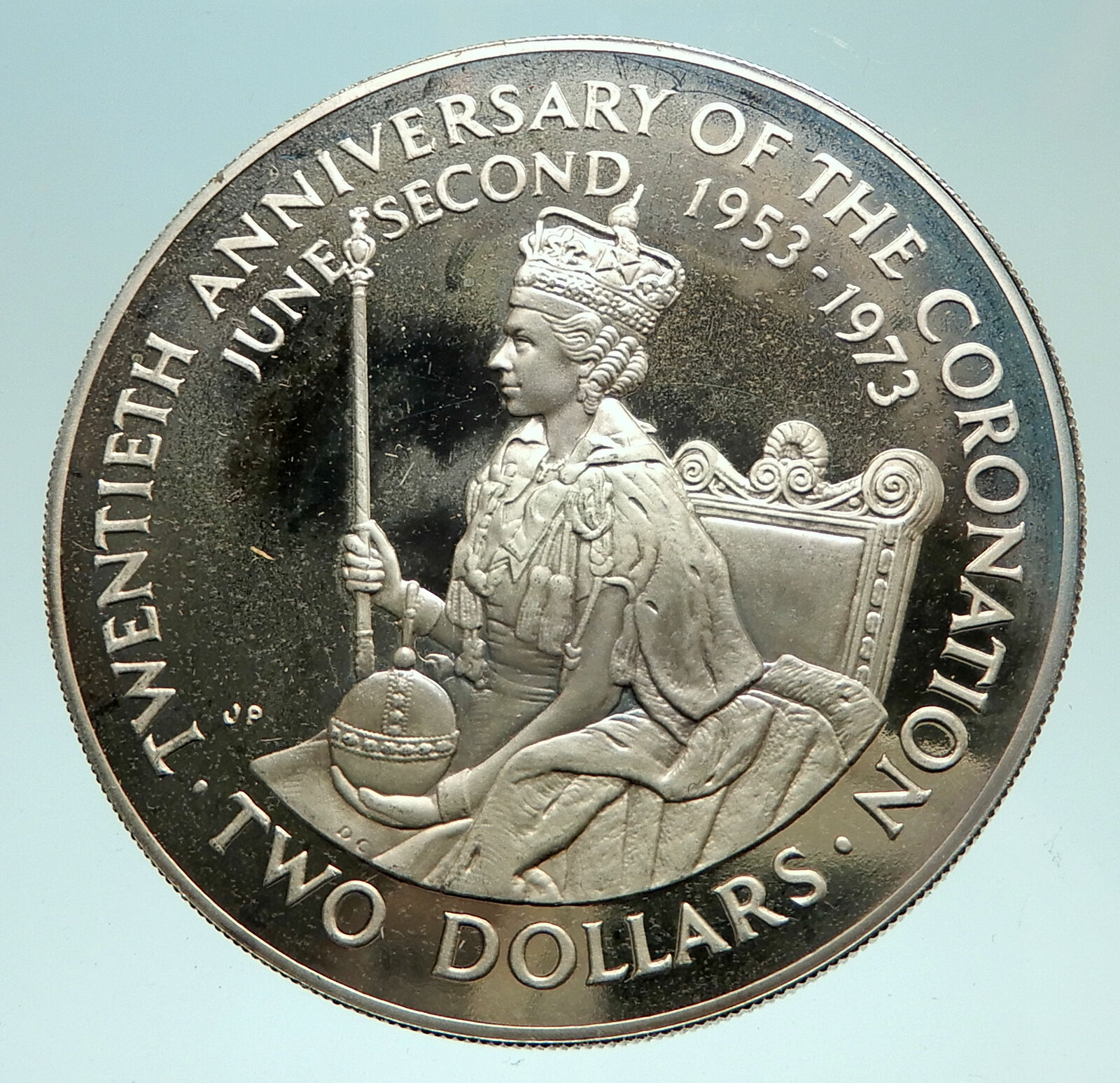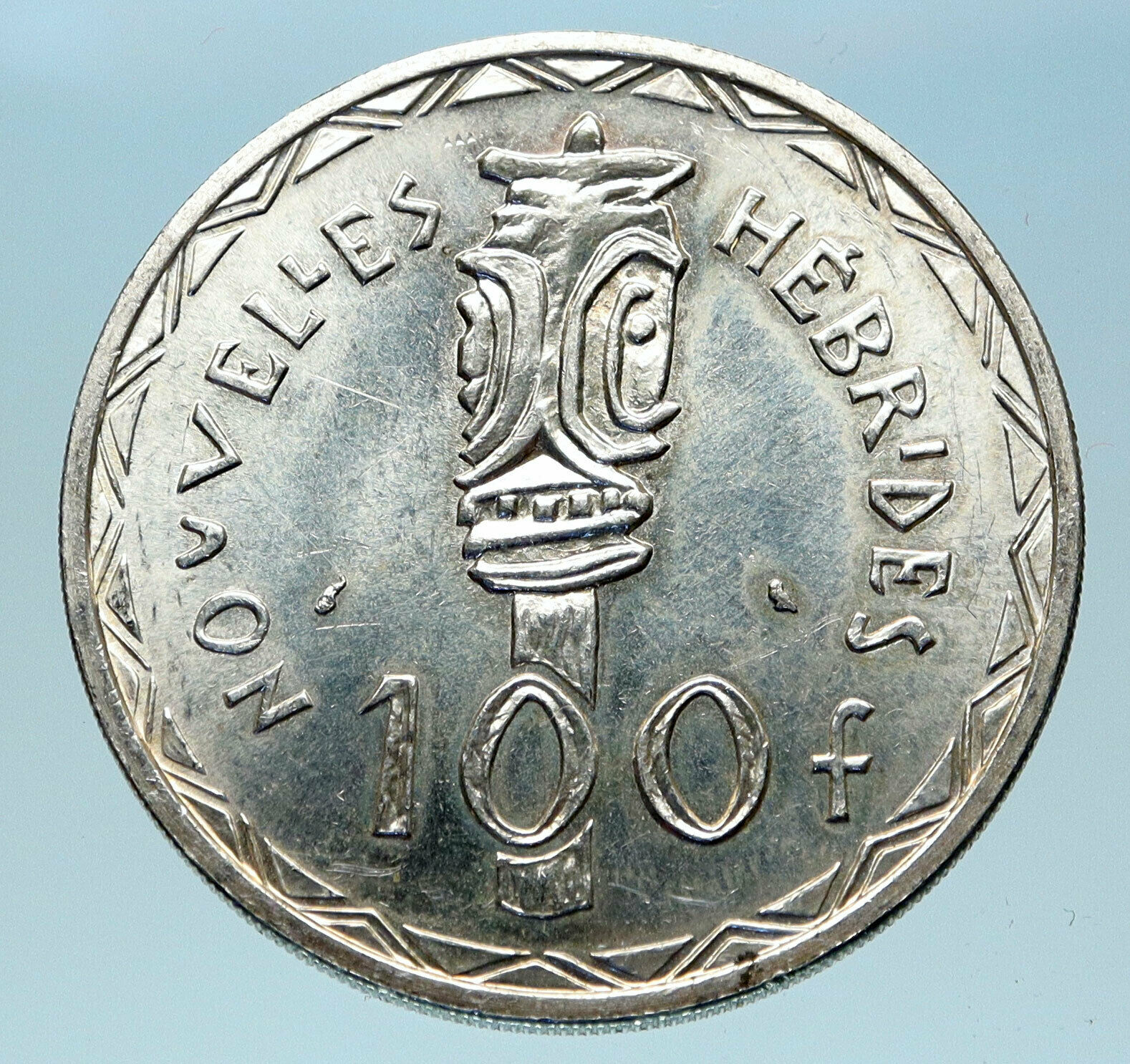|
Papua New Guinea
1975 Proof Silver 10 Kina 45mm (42.50 grams) 0.925 Silver (1.2372 oz. ASW)
Reference: KM# 8a
PAPUA NEW GUINEA, National Coat-of-arms.
K10, New Guinea eagle, or Kapul eagle or Papuan Harpy Eagle (Binomial Name: Harpyopsis novaeguineae) standing right, head left.
You are bidding on the exact item pictured, provided with a Certificate of Authenticity and Lifetime Guarantee of Authenticity.

The Papuan eagle (Harpyopsis novaeguineae) also known as the Papuan harpy eagle, New Guinea eagle, or Kapul eagle, is a large (length 75-90 cm, wingspan 157 cm, weight 1600-2400 g) greyish brown raptor with a short full crest, broad three-banded wings, powerful beak, large iris, long rounded tail and white underparts. It has long and powerful unfeathered legs with sharp claws. The sexes are similar, and the female is slightly larger than the male. It is the only member of the genus Harpyopsis.
The Papuan eagle is endemic to undisturbed tropical rainforests of New Guinea, where it became the top predator of the island after the extinction of local giant monitor lizards and possibly Thylacoleo. The diet consists mainly of phalangers or Kapul in a local language, hence its alternative name. It also feeds on other mammals, birds and snakes. Singing dogs are known to steal the bird’s kills; in turn, the canids are part of the bird’s diet.
One of a group of four large eagles, the others being the crested and harpy eagle of South America and the Philippine eagle of the Philippines (although the latter may be more closely related to species of snake eagle around the world), the New Guinea harpy eagle is essentially a mountain bird that nests in high forest trees, but may be found down to sea level in the few places where forests remain undisturbed.
Due to ongoing habitat loss, small population size, and hunting for its feathers which are used on ceremonial occasions, the Papuan eagle is evaluated as Vulnerable on the IUCN Red List of Threatened Species. It is listed on Appendix II of CITES.
 Papua New Guinea, officially the Independent State of Papua New Guinea, is an Oceanian country that occupies the eastern half of the island of New Guinea and its offshore islands in Melanesia, a region of the southwestern Pacific Ocean north of Australia. Its capital, located along its southeastern coast, is Port Moresby. The western half of New Guinea forms the Indonesian provinces of Papua and West Papua. Papua New Guinea, officially the Independent State of Papua New Guinea, is an Oceanian country that occupies the eastern half of the island of New Guinea and its offshore islands in Melanesia, a region of the southwestern Pacific Ocean north of Australia. Its capital, located along its southeastern coast, is Port Moresby. The western half of New Guinea forms the Indonesian provinces of Papua and West Papua.
At the national level, after being ruled by three external powers since 1884, Papua New Guinea established its sovereignty in 1975. This followed nearly 60 years of Australian administration, which started during World War I. It became an independent Commonwealth realm in 1975 with Queen Elizabeth II as its head of state and became a member of the Commonwealth of Nations in its own right.

Papua New Guinea is one of the most culturally diverse countries in the world. It is also one of the most rural, as only 18 per cent of its people live in urban centres.[10] There are 852 known languages in the country, of which 12 now have no known living speakers. Most of the population of more than 8 million people lives in customary communities, which are as diverse as the languages. The country is one of the world’s least explored, culturally and geographically. It is known to have numerous groups of uncontacted peoples, and researchers believe there are many undiscovered species of plants and animals in the interior.
.svg/250px-Papua_New_Guinea_(orthographic_projection).svg.png) Papua New Guinea is classified as a developing economy by the International Monetary Fund. Strong growth in Papua New Guinea’s mining and resource sector led to the country becoming the sixth-fastest-growing economy in the world in 2011. Growth was expected to slow once major resource projects came on line in 2015. Mining remains a major economic factor, however. Local and national governments are discussing the potential of resuming mining operations at the Panguna mine in Bougainville Province, which has been closed since the civil war in the 1980s-1990s. Nearly 40 per cent of the population lives a self-sustainable natural lifestyle with no access to global capital. Papua New Guinea is classified as a developing economy by the International Monetary Fund. Strong growth in Papua New Guinea’s mining and resource sector led to the country becoming the sixth-fastest-growing economy in the world in 2011. Growth was expected to slow once major resource projects came on line in 2015. Mining remains a major economic factor, however. Local and national governments are discussing the potential of resuming mining operations at the Panguna mine in Bougainville Province, which has been closed since the civil war in the 1980s-1990s. Nearly 40 per cent of the population lives a self-sustainable natural lifestyle with no access to global capital.
Most of the people still live in strong traditional social groups based on farming. Their social lives combine traditional religion with modern practices, including primary education. These societies and clans are explicitly acknowledged by the Papua New Guinea Constitution, which expresses the wish for “traditional villages and communities to remain as viable units of Papua New Guinean society” and protects their continuing importance to local and national community life.
|






 Papua New Guinea, officially the Independent State of Papua New Guinea, is an Oceanian country that occupies the eastern half of the island of New Guinea and its offshore islands in Melanesia, a region of the southwestern Pacific Ocean north of Australia. Its capital, located along its southeastern coast, is Port Moresby. The western half of New Guinea forms the Indonesian provinces of Papua and West Papua.
Papua New Guinea, officially the Independent State of Papua New Guinea, is an Oceanian country that occupies the eastern half of the island of New Guinea and its offshore islands in Melanesia, a region of the southwestern Pacific Ocean north of Australia. Its capital, located along its southeastern coast, is Port Moresby. The western half of New Guinea forms the Indonesian provinces of Papua and West Papua. 
.svg/250px-Papua_New_Guinea_(orthographic_projection).svg.png) Papua New Guinea is classified as a developing economy by the International Monetary Fund. Strong growth in Papua New Guinea’s mining and resource sector led to the country becoming the sixth-fastest-growing economy in the world in 2011. Growth was expected to slow once major resource projects came on line in 2015. Mining remains a major economic factor, however. Local and national governments are discussing the potential of resuming mining operations at the Panguna mine in Bougainville Province, which has been closed since the civil war in the 1980s-1990s. Nearly 40 per cent of the population lives a self-sustainable natural lifestyle with no access to global capital.
Papua New Guinea is classified as a developing economy by the International Monetary Fund. Strong growth in Papua New Guinea’s mining and resource sector led to the country becoming the sixth-fastest-growing economy in the world in 2011. Growth was expected to slow once major resource projects came on line in 2015. Mining remains a major economic factor, however. Local and national governments are discussing the potential of resuming mining operations at the Panguna mine in Bougainville Province, which has been closed since the civil war in the 1980s-1990s. Nearly 40 per cent of the population lives a self-sustainable natural lifestyle with no access to global capital. 




